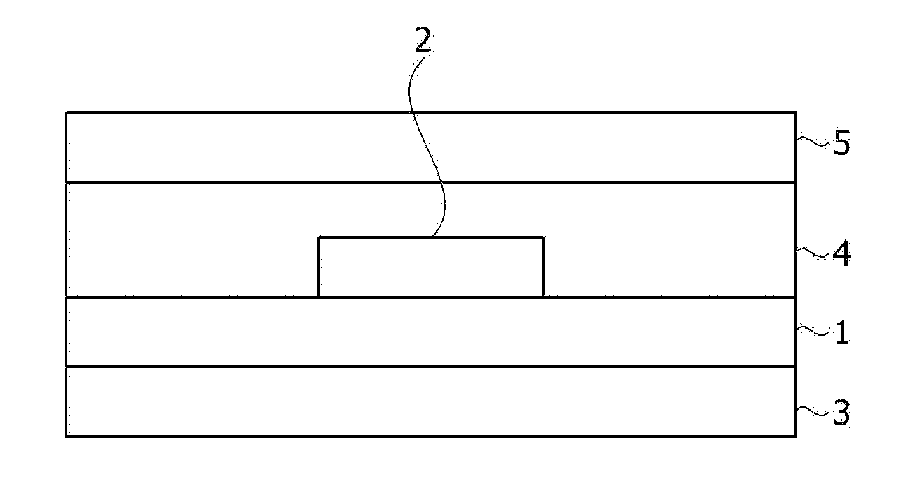Organic electronic device
a technology of electronic devices and organic materials, applied in the field of organic electronic devices, can solve problems such as difficulty in continuous processing, and achieve the effect of excellent endurance reliability and excellent moisture barrier characteristics
- Summary
- Abstract
- Description
- Claims
- Application Information
AI Technical Summary
Benefits of technology
Problems solved by technology
Method used
Image
Examples
example 2
[0113]An adhesive composition and an adhesive film were produced in the same manner as in Example 1, except that a styrene-isobutylene copolymer (SIBS 102T, Mw: 100,000, Kaneka) as a polymer derived from butylene, a hydrogenated bisphenol A epoxy resin (YX8000, epoxy equivalent: 201 g / eq, Mitsubishi Chemical) as a curable oligomer, and an alicyclic epoxy compound (Celloxide 2021P, Mw: 250, Daicel corporation) as a curable monomer were introduced into a reaction vessel at a weight ratio of 60:15:25 (SIBS 102T: YX8000: Celloxide 2021P), respectively.
experimental example 2
g
[0120]Before curing the adhesive film prepared in Examples and Comparative Examples, the film was laminated to a thickness of 600 μm, and physical properties were measured using ARES equipment as follows. The viscosity was measured depending on shear stress in conditions of a temperature of 65° C., a strain of 5% and a frequency of 1 Hz.
Experimental Example 3—Step Filling Property
[0121]In a simple substrate on which steps of 10 μm are formed, the adhesive film prepared in Examples and Comparative Examples was adhered to the center portion by using a roll laminator. A glass having the same size as the prepared specimen is pressed in the vertical direction and bonded together by applying a vacuum of 100 pa and a pressure of 0.5 MPa under a temperature condition of 65° C. with a vacuum bonding machine. The cohesiveness was determined depending on looseness of the step forming region in the front side of the adhesive and classified as 0 when the loosed portion of the step formation reg...
experimental example 4
g Ability
[0122]A sample in which the pressure-sensitive adhesive layer prepared in Examples and Comparative Examples was formed to a thickness of 50 μm on one surface of a polyimide substrate was attached to a glass with an adhesion area of 1 cm×1 cm, and the holding ability of the pressure-sensitive adhesive layer was measured, when a load of 1 kg was applied to the substrate in the direction of gravitational force at 80° C. for 24 hours.
[0123]It was classified as O when the pressure-sensitive adhesive layer is adhered to the glass for 12 hours or more and X when it falls.
TABLE 1Storage elasticViscositymodulusat 65° C.Stepafter curingbefore curingfillingHeat resistance(MPa)(Pa · s)propertyholding abilityExample 12.15000Δ◯Example 22.04000Δ◯C. Example 10.320000XXC. Example 20.115000XXC. Example 31.01500◯X(C. Example: Comparative Example)
PUM
| Property | Measurement | Unit |
|---|---|---|
| storage elastic modulus | aaaaa | aaaaa |
| frequency | aaaaa | aaaaa |
| temperature | aaaaa | aaaaa |
Abstract
Description
Claims
Application Information
 Login to View More
Login to View More - R&D
- Intellectual Property
- Life Sciences
- Materials
- Tech Scout
- Unparalleled Data Quality
- Higher Quality Content
- 60% Fewer Hallucinations
Browse by: Latest US Patents, China's latest patents, Technical Efficacy Thesaurus, Application Domain, Technology Topic, Popular Technical Reports.
© 2025 PatSnap. All rights reserved.Legal|Privacy policy|Modern Slavery Act Transparency Statement|Sitemap|About US| Contact US: help@patsnap.com


